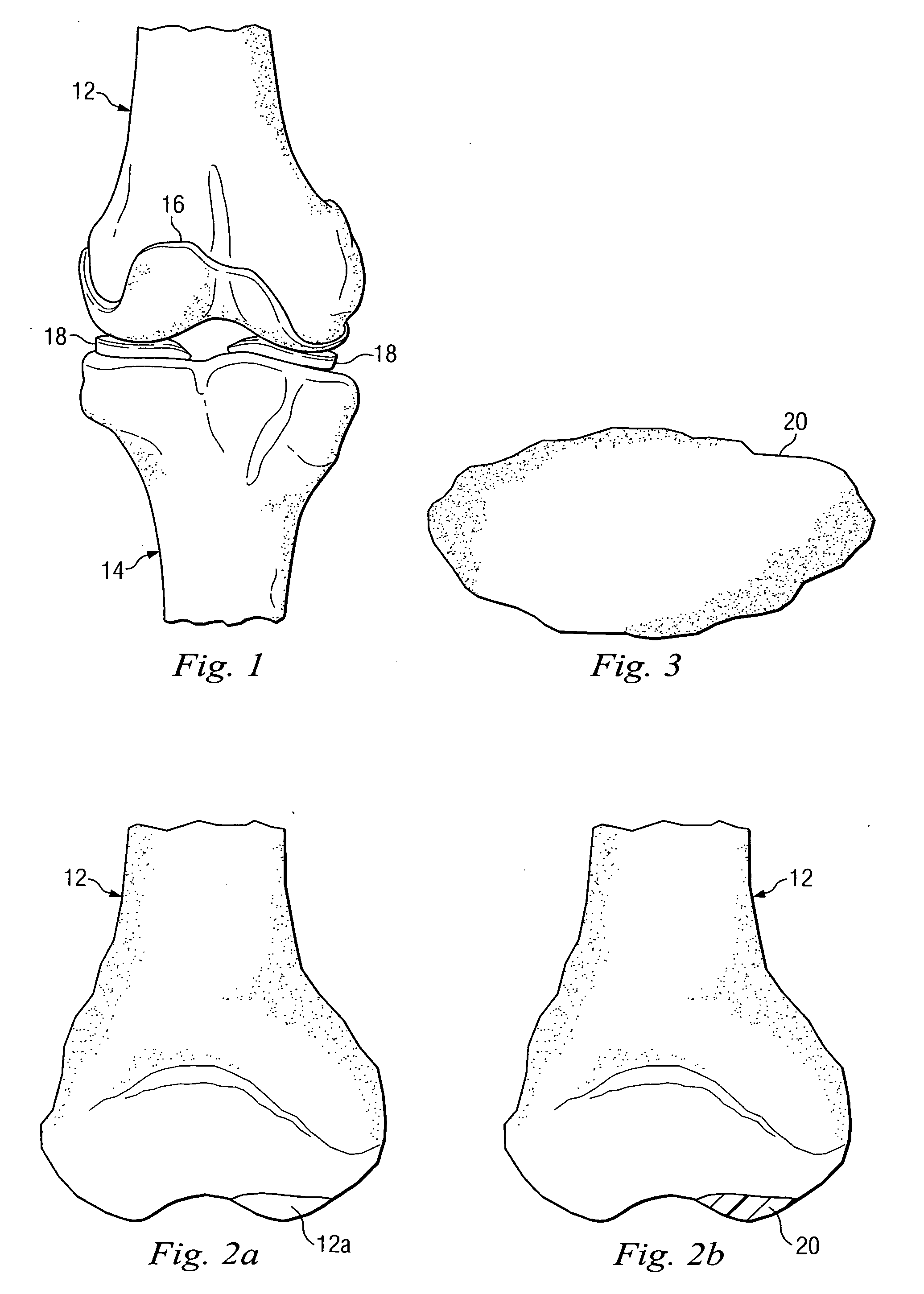Osteochondral implant procedure
a technology of osteochondral implants and implants, which is applied in the field of osteochondral implant procedures, can solve the problems of poor healing of tearing, swelling and limited motion, and less than optimal healing
- Summary
- Abstract
- Description
- Claims
- Application Information
AI Technical Summary
Problems solved by technology
Method used
Image
Examples
Embodiment Construction
[0015] Referring to FIG. 1 of the drawing, the reference numeral 10 refers, in general, to a knee area of a human including a femur 12 and a tibia 14 whose respective chondral areas are in close proximity. A cartilage 16 extends over a portion of the chondral area of the femur 12, and a meniscus 18 extends between the cartilage and the tibia 14. The patella, as well as the tendons, ligaments, and quadriceps that also form part of the knee are not shown in the interest of clarity.
[0016]FIG. 2a depicts a defect, or void, 12a in the femur 12 of FIG. 1. In this context, it will be assumed that at least a portion of the defect 12a was created as a result of a portion of the cartilage 16 extending over a chrondral area of the femur 12 wearing away or becoming damaged and being removed by the surgeon. It also will be assumed that the defect 12a also includes a portion of the condyle that extended immediately below the worn or removed cartilage.
[0017] According to an embodiment of the pro...
PUM
 Login to View More
Login to View More Abstract
Description
Claims
Application Information
 Login to View More
Login to View More - R&D
- Intellectual Property
- Life Sciences
- Materials
- Tech Scout
- Unparalleled Data Quality
- Higher Quality Content
- 60% Fewer Hallucinations
Browse by: Latest US Patents, China's latest patents, Technical Efficacy Thesaurus, Application Domain, Technology Topic, Popular Technical Reports.
© 2025 PatSnap. All rights reserved.Legal|Privacy policy|Modern Slavery Act Transparency Statement|Sitemap|About US| Contact US: help@patsnap.com



